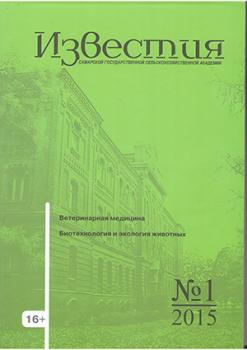Sumy, Ukraine
Sumy, Ukraine
Ukraine
Sumy, Ukraine
The purpose of research is determining the agro-biological features of modern varieties of brown mustard when grown under the conditions of Left-bank Forest-steppe of Ukraine. The results of the research of 2014-2016 biennium to study the reaction of modern varieties of brown mustard by certain growing have been presented. The features of plant growth and development have been determined, as well as the comparative characteristic of productivity indicators has been conducted. The subject of research are the brown mustard varieties (Prima, Mriya, Demeter, Retro, Rosava, Roksolana, Felicia, Chornyava). The experiment was done by the training and production complex of Sumy National Agrarian University. At the simultaneous sowing in the second decade of April, the shoots appeared almost at the same time. The beginning of flowering (BBCH 60) of the most studied Brassica juncea varieties was fixed on the 40-48 day. The period of vegetation in the context of varieties was: Mriya – 85 days, Rosava, Retro – 90 days, Prima – 92 days, Roksolana, Chornyava – 99 days, Felicia – 89 days, Demeter – 101 days. The biggest leaf area was formed in Prima variety – 26.1 thousand M2/ha, the smallest leaf area was formed in Chornyava variety – 16.4 thousand m2/ha. In other varieties, the index ranged from 20.5 to 23.8 thousand M2/ha. The research results showed that under the conditions of the Left-bank Forest-steppe of Ukraine the agro-biological features of the varieties of Prima, Felicia, Demeter and Mriy have made the formation of the greatest seed yield of 23.4-24.7 c/ha. The minimum yield capacity was obtained from the varieties of Chornyava and Rosava (14.5−19.0 c/ha). The agro-biological features of Retro and Roksolana varieties contributed to the performance of the yield capacity potential of brown mustard seed at the level of 20.2-22.5 c/ha.
mustard, agrobiological, features, morphological characteristics, productivity
1. Kartamysheva, E. V. Problems and perspectives of Brassica juncea cultivation // Zemledeliye. - 2006. - №4. - P. 25-26.
2. Velkova, N. I. Yield capacity of white mustard variety samples of the VIR collection under the conditions of Oryol region // Ekologiya, environment and health in the Central Chernozem region : coll. - Kursk, 2005. - Vol. 1. - P. 108-110.
3. Shkurko, T. N. Ukrainian mustard meets high European demands of the quality [Electronic resource] : electronic text data. - Ukraine : APK-inform. - URL: http://www.apkinform.com/ru/exclusive/opinion/1023330#.VMOtAWOIlCw (access date: 18.11.2016).
4. Polyakov, O. Perspectives of mustard growing [Electronic resource] // Propositsiya : electronic scientific magazine. - 2016. -URL: http://www.propozitsiya.com/?page=146&;itemid=2879 (date of access: 18.11.2016).
5. Gorshkov, V. I. New varieties of oil cabbage crops: spring rape, spring and winterturnip, mustard / V. I. Gorshkov, V. V. Karpachev, A. N. Vlasova // Zemledeliye. - 2009. - №2. - P. 44-45.
6. Gavrilova, V. A. Variability of economically valuable features of the oil crops under ecological and geographical tests / V. A. Gavrilova, A. G. Dubovskaya, N. G. Konkova // Agricultural biology. - 2007. - №5. - P. 26-41.
7. Mathur, N. Upbeat on mustard seed in the short term [Electronic resource] : electronic text data. - Indiya : [without a publisher], 2012. - URL: http:/www.articleseconomictimesindiatimes.com/2012-11-19/news/35203718_1_mustard-oil-largest-mustard-domesticmustard (date of access: 15.11.2016).





